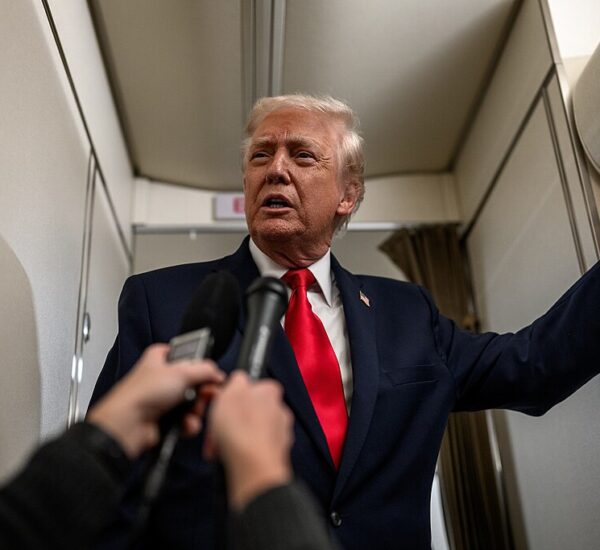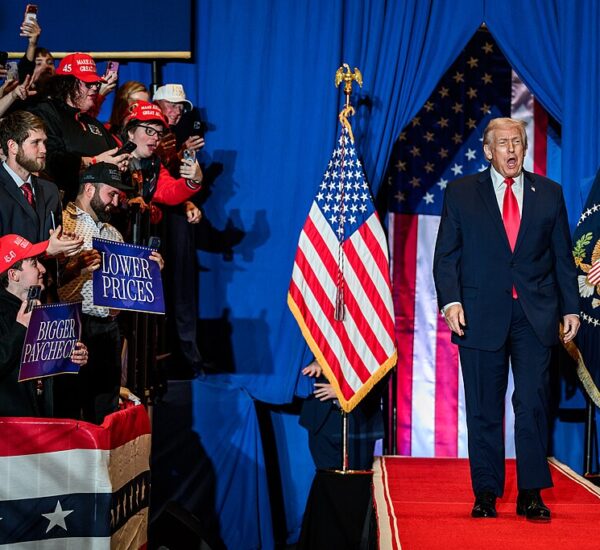GOP Dealing With Major New Issue
President Donald Trump’s bold legislative victory — a sweeping domestic policy package known as the “big, beautiful bill” — is hitting turbulence back home as Republican lawmakers face intense pushback from constituents during local town halls.
While the bill passed the House with enthusiastic GOP support, it’s proving to be a tougher sell to voters — especially those concerned about Medicaid, SNAP (food stamps), and America’s rising national debt.
Tensions Rise as GOP Lawmakers Defend Trump’s Agenda
In states like Nebraska, Iowa, and Colorado, Republican representatives who voted in favor of the bill are encountering fierce questions and emotional reactions from voters. The town halls, often dominated by older Americans who depend on federal programs, have become political flashpoints.
In Nebraska, Rep. Mike Flood (R) faced tough criticism over budget cuts and a controversial provision in the 1,000+ page bill that limits the power of federal judges. When asked why he supported language that weakens judicial oversight, Flood admitted, “This provision was unknown to me when I voted.” The response drew gasps and frustration from the crowd.
Voters also demanded answers on how the bill extends the 2017 Trump tax cuts — a win for working families — while appearing to offset costs with reductions in healthcare and food assistance. “How do you justify adding $5 trillion to the deficit while cutting benefits?” one attendee asked.
Iowa Town Hall Turns Heated Over “Generational Investment”
Meanwhile, in Iowa, Rep. Ashley Hinson (R) was met with boos when she praised the bill as “a generational investment in American prosperity.” Hinson fired back, “I can’t believe you would boo tax relief for hardworking Americans,” emphasizing the bill’s focus on lowering taxes, boosting border security, and reducing government overreach.
Coordinated Disruption? Outside Groups Fuel the Fire
Some of the backlash may be orchestrated. Liberal activist groups, including Indivisible and local Democrat chapters, have called on their members to “pack the town halls” and disrupt GOP messaging. However, Rep. Flood dismissed the notion of paid protesters, telling his Nebraska audience, “I don’t think one of you is here because you were trucked in or paid.”
What’s Next for the “Big, Beautiful Bill”?
The bill now heads to the U.S. Senate, where revisions are expected. Conservative leaders like Sen. Ron Johnson (R-WI) are pushing for deeper spending cuts and a return to pre-COVID spending levels. Others, like Sen. Josh Hawley (R-MO), have signaled opposition to changes that would impact the elderly or working-class Americans.
Speaker Mike Johnson (R-LA) has urged the Senate to keep changes minimal to preserve unity within the House GOP. But President Trump remains open-minded. “Let the Senate make changes. Some I’ll agree with, some might be significant,” he said confidently.
Democrats Plot to Weaponize the Bill in 2026 Midterms
Democrats smell blood in the water. With many vulnerable Republicans now on record supporting cuts to entitlement programs, liberal strategists are planning to make the bill a centerpiece of their 2026 campaign strategy.
“This betrayal will cost Republicans the House,” claimed Rep. Suzan DelBene (D-WA), head of the Democrats’ campaign arm. But many conservative voters see the bill as long-overdue action to fix Washington’s reckless spending and return control to the people.
Bottom Line: Will GOP Hold the Line?
Trump’s “big, beautiful bill” is more than just legislation — it’s a test of Republican conviction and a defining moment for America’s future. As the debate shifts to the Senate, Republican lawmakers must stand firm, clearly communicate the bill’s benefits, and remind voters that this is about restoring fiscal sanity, securing the border, and reviving the American Dream.





